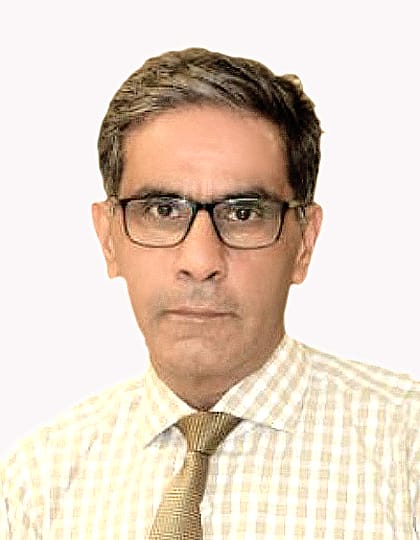Exploring The Key Challenges In Implementing Sustainable Waste Management Practices
Danish Khan
M.phil Scholar, Department of Anthropology,
Arid Agriculture University , Rawalpindi
danishkhanturk633@gmail.com
This research topic focus on exploring anthropological insights with references to key challenges in implementing sustainable waste management practices. In developing nations, policies are implemented to lessen the negative effects of a large amount of waste produced by rapid urbanization and accelerated industrialization. Nonetheless, with regards to the administration of metropolitan strong waste (MSW), which requires the joint effort of various partners and a complete technique for accomplishing maintainability objectives and strategies for urban communities, these approaches are a long way from laying out systems that address the issues of society. With its hypothetical, down to earth, and political ramifications, this study empowers the accomplishment of practical improvement objectives, gives natural, financial, and cultural commitments, and fills in as an upgrade for the advancement of multidisciplinary public strategies. In the world’s major cities, the issue of urban solid waste management (SWM) is a major one that is getting worse with rapid urbanization.
key words: Waste management, economic, environmental and societal contributions
INTRODUCTION
The term “waste management” refers to all of the different actions and strategies taken to control waste, such as treating the soil or reusing existing waste or limiting waste production in any case. The statement that “waste management” and “waste disposal” are sometimes used interchangeably is not entirely accurate. The latter is just one possible facet of waste management, which encompasses the entire lifecycle of waste, from its creation to its disposal or recovery. We produce so much waste right now-the amount of plastic waste alone is 400 million tons per year-and various nations and regions have devised various solutions to the issue, making waste management challenging. Even some states and counties have developed their own systems on this front. All over the world, laws like the EU’s 2021 ban on single-use plastics and Hong Kong’s 2023 waste charging scheme reflect these efforts.
A waste management system must be a part of an inclusive environmental management system. A waste management system is the management of all the responsibilities, practices, procedures, processes, and resources required to establish an environmental-compliant waste management system. Anything that is unwelcome or unusable that is intentionally discarded by its users is typically referred to as “waste.” In order to precisely classify waste and minimize the negative effects of its disposal on the environment, society, or economy, international organizations like the United Nations (UN) and the European Union (EU) have drafted clear legal definitions of various types of waste. (US Environmental Protection Agency, 2014; EU Environmental Commission, 2015).
All trash created by industrial and manufacturing activities or processes is referred to as industrial waste, as it is an inherent result of manufacturing processes. Waste from building and demolition, toxic substances, slag’s, sewage sludge, and different kinds of non-flammable, oily, and workshop materials are all considered forms of industrial waste. Modern trash may contain pieces that are toxic as well as those that are not. Waste is produced by several industries, including mining, manufacturing, and agriculture. Most hazardous industrial waste is composed of chemicals, solvents, heavy metals, and compounds (such as lead, mercury, chromium, and arsenic) that are bad for the environment and human health. Non-hazardous industrial waste includes things like food waste, building debris, and things like tires, electronics, and furniture that aren’t dangerous but nevertheless cause problems. (Ahmad & Aadil, 2019).
Industrial production processes produce pollutants in both liquid (industrial wastewater) and solid (industrial solid waste) forms. Industries typically generate solid waste. The two primary types of industrial waste produced by industrial production are solid waste and industrial solid waste. In addition to containing infectious pathogens, industrial waste water frequently oxidizes, corrodes, is harmful, toxic, carcinogenic, and ecotoxic. In wastewater, for instance, pharmaceuticals, chemicals, and dyes are harmful to humans and other animals (Adar et al., 2022). In comparison to issues with other types of waste, industrial waste contamination issues are more complex. Pollutants produced by industrial development have a significant negative impact on the environment. Industrial wastewater poses a threat to human health and safety due to its high pollution concentration and complex pollution components, in addition to polluting water bodies (Khoshsepehr, Alinejad, & Alimohammadlou, 2023).
A solid waste management (SWM) system consists of the following elements: waste creation, storage, collection, transportation, treatment, processing, recycling, and ultimate disposal. To prevent or lessen waste production in the first place, Emerald Insight offers both the current issue and the journal’s full text archive. Strategies may also be a part of a waste management system. The current study focuses on municipal solid waste (MSWM) management. Municipal solid waste is garbage that originates from residential, commercial, and institutional contexts, including homes, businesses, schools, and offices. Globally, municipal waste management systems are influenced by social, economic, cultural, psychological, educational, and technical variables. Amounts and items in squanders also differ as per the expectation for everyday comforts and level of urbanization (Guerrero, Maas, & Hogland, 2013)
Solid waste management (SWM) is the process of treating solid, liquid, or atmospheric emissions prior to their discharge into the environment. As urban populations continue to rise and consumption patterns change, SWM is becoming an increasingly important worldwide issue. (Jacobsen, Buysse, & Gellynck, 2013).
Furthermore, waste-related greenhouse gas emissions have been found to be a significant cause of global warming. (Costa & Campos, 2017). The weight of municipal budgets and the high costs associated with their management have an impact on urban solid waste management (SWM), which is a central issue in the world’s major cities and grows with massive urbanization and rapid development, according to (Azevedo & Scavarda, 2019).
The compromises and progressive partner the executives innate in the guidelines right now set up for metropolitan SWM, present a developing obstruction. The process of separating, storing, collecting, transporting, processing, recovering, and disposing of solid waste necessitates the application of multidisciplinary skills and the involvement of community members, public authorities, and municipalities. Waste from any development can only be recycled, recovered, and reused completely to ensure sustainability. One way to deal with accomplishing this objective is to endeavor to recuperate energy from squander (Abbasi, 2018).
According to I. Lopes & Caetano (2015), that processes that turn waste into energy can help SWM be more sustainable and provide renewable energy in this way. However, waste collection, transportation, and disposal remain problematic issues in developing nations, despite the fact that waste is used as an energy source in developed nations. Due to its impact on residents’ health , SWM is a global issue, particularly in developing nations’ urban areas. The SWM can be implemented in a number of different ways, each of which is determined by the country’s level of development (I. Lopes & Caetano, 2015).
According to the author, that developed nations have a higher level of economic development, a higher level of public awareness, and are more likely to take preventative measures to reduce waste. On the other hand, developing nations’ populations use less expensive, low-tech solutions because they are more concerned with short-term gain or survival (Fuss, Barros, & Poganietz, 2018).
As energy recovery has taken precedence, solid waste has significantly decreased in Europe’s landfills. In Decree-Law no. 1, waste recovery over disposal is emphasized in Portugal. 178/2006. However, poor SWM results in a socio-environmental crisis for developing nations due to the lower than anticipated economic potential of reuse. Consequently, it is challenging to adopt a sustainable management perspective that incorporates social inclusion. SWM has been complicated by urbanization, inequality, economic expansion, cultural and socioeconomic factors, political, governance, and institutional issues, as well as external influences. (E. Marshall & Farahbakhsh, 2013)
REVIEW OF LITERATURE
The situation tends to get worse in the municipal area due to the need for proper disposal and the constant increase in waste. Elsaid & Aghezzaf (2015), state that developing nations’ municipal administration needs urgent and comprehensive reform. The global MSW generation rate, which includes waste produced in residential, commercial, and institutional settings like offices, shops, and homes, is anticipated to rise to 2.2 billion tons annually by 2025. Global MSW systems are influenced by social, financial, cultural, psychological, educational, and technological factors.
This indicates, as stated by Elsaid and Aghezzaf (2015), that the degree of urbanization as well as the standard of living also have an effect on the amounts and contents of MSW. In addition, it is essential to make a distinction between industrial solid waste, which, due to the nature of the industries, emits more concentrated pollutants by discharge and greater pollution discharges by source. Industrial solid waste is typically associated with constituents that are more hazardous and risky, and it has the greatest potential to exceed the ecosystem’s natural limits of self-recovery or self-healing capabilities.
According to Aleluia & Ferro (2016), urbanization rates have increased in tandem with the continent’s economic and demographic expansion. The proportion of Asians living in cities increased from 31.5 percent in 1990 to 42.2 percent in 2010, according to UN-Habitat (2011). Asia’s cities housed 1.76 billion people in 2010, or more than half of the world’s urban population. Urban communities have been extending at a quick rate, presenting critical difficulties to both public and neighborhood legislatures. The growing amount of municipal solid waste (MSW) is one of these issues that city governments have had to deal with the most difficultly. In 2011, cities around the world produced 1.3 billion tons of solid waste annually, and that number is expected to rise to 2.2 billion tons by 2025.
Aladelokun & Ayiti (2024), Human activity will always result in the generation of a variety of waste. However, societies must carefully consider how to address and mitigate its effects for the benefit of the public and the environment. The rich environment, diverse cultures, and economic vitality of the region of South West Nigeria mark a significant turning point. To strike a balance between the needs of progress and the preservation of the environment, waste management must be refined and tailored to each situation.
O. Olukanni & Adeleke (2016), said it is important to note that waste production has significantly increased as urbanization in South West Nigeria has accelerated. Within this crucial context, the existing literature offers insights into the difficulties, current waste management practices, and potential solutions. Studies indicate that organic, plastic, paper, and electronic waste are among the numerous waste streams. This emphasizes the significance of comprehending the composition when designing effective waste management systems that are tailored to the region’s particular characteristics.
Jalil (2010), said when the developed world embarked on a major development project in the 1970s that included the construction of tall buildings, wide highways, and clearing forests, the concept of sustainable development first gained traction. To meet its citizens’ needs and provide them with cutting-edge infrastructure, skyscrapers, and recreational facilities, a nation must expand. Frumkin (2017), the significance of outdoor-based tourism and recreation is becoming increasingly recognized. The opportunity for social interaction, the creation of income opportunities for long-term financial security, and the support of local economic development are all benefits of getting outside and participating in activities.. Therefore, the travel industry and sporting exercises’ various benefits are acquiring significance.
Ngoc & Schnitzer (2009), In the midst of social emergency or misfortune, open air amusement exercises additionally assume a significant humanistic part . Based on this social function, recreational activity participation rises during stressful life events like the COVID-19 pandemic. Getting outside and spending time in nature are important factors in disease prevention and can help reduce mental health problems. On the other hand, every human activity results in the production of waste, and the amount of waste typically rises in tandem with the demand for improved quality of life. It is understood that hostile changes occur in the biological conditions of private grounds.
METHODOLOGY
This study also incorporates a systematic literature review on key challenges of implementation of waste management practices. The systematic review involved searching multiple academic databases, including Web of Sciences, and Google Scholar, using a set of predefined search terms.
After the initial search, the article and reports were screened for relevance based on their title and abstract. The selected articles were read in full, and the key theme and argument were identified. These theme were than analyzed to identify similarities and differences, as well as to identify any gaps in the literature.
FINDINGS AND DISCUSSION
HUMAN ACTIVITIES
Squander has forever been created by human exercises. This was not a significant issue when the human population was relatively small and nomadic; however, as urbanization and the emergence of large conurbations occurred, it became a significant issue. Poor waste management resulted in the contamination of the air, soil, and water, which had a significant impact on public health. In earlier times, diseases brought on by contaminated water and microorganisms decimated the population of Europe. Surprisingly, cholera became more common in the nineteenth century. Mistakes in waste management have been linked to a number of health problems, many of which are well-known and particularly noticeable in developing nations.
CLIMATE CAHNGE
Environmental change is sped up and brought about by the ascent in discharges brought about by expanded social action. The fastest global environmental warming, which has an impact on surface temperatures and conditions, is the most serious negative consequence and the most pressing concern. However, the process of changing the global temperature alters the functioning of biological systems and initiates normal cycles, such as the release of more methane and carbon dioxide (CO2) from vegetation. The travel industry, versatility, and amusement regions are the spots where social exercises are generally common. Waste production can have significant effects on ecosystems due to high participation. Over four billion tons of waste are produced annually, and recycling this waste is becoming more and more challenging. This has negative effects like changing how wild animals eat and having problems with solid waste, among other things.
POPULATION GROWTH
Population growth has a significant impact on the management of solid waste because it makes more waste. Because there is a direct correlation between an increase in waste production and rapid population growth in urban areas, authorities have difficulty effectively managing solid waste.
RECOMMENDATION:
Awareness And Education
o Set up campaigns to raise awareness about the right ways to handle waste and reach different demographics.
o Stress the negative effects open dumping has on the environment and people’s health and encourage alternatives.
Encourage Responsible Eating
o Launch campaigns to promote responsible consumption and reduce household waste
. o By advocating for responsible plastic use and promoting alternatives, you can address the significant prevalence of plastic waste.
Enforcement And Regulation
o Increase the regulations governing waste management to guarantee that the proper disposal procedures are followed.
o Enforce penalties for illegal dumping and encourage community involvement in waste management initiatives.
Improve Waste Collection
o Consider ways to increase the frequency of waste collection, particularly in locations with monthly or irregular schedules
. o Improve the waste collection infrastructure and logistics for consistent and more efficient services.
Diversify The Methods Used To Dispose Of Waste:
o Make recycling facilities accessible and encourage recycling programs.
o Make composting, particularly for organic waste, a method that is sustainable.
o Research safer alternatives to open dumping and educate the public on responsible waste disposal practices.
Innovation and Research
o If you’re looking for long-term solutions, look into alternative methods of treating waste, especially those that are called “others.”
o In order to address regional waste management issues, encourage partnerships in research.
Conclusion:
As a result of Asia’s rapid urbanization and population growth, waste production has increased, but waste management practices have not improved. This rise in waste poses serious threats to the environment and health. Additionally, there is a dearth of up-to-date and comprehensive data regarding the patterns, composition, and disposal strategies of waste. Taking into account the current situation as well as the particularities of the region, sustainable waste management practices and challenges must urgently be considered in Asia specifically. We try to find new strategies and best practices that could help solve the complicated web of issues related to waste, drawing from both local and global contexts. In addition, there is a significant disparity in how waste management is prioritized in Asia, with urban areas receiving more attention than peri-urban and rural areas. As we traverse this terrain, we hope that this paper will encourage informed discussion and evidence-based decision making. By highlighting the challenges and opportunities that define waste management in Asia, we want to give stakeholders at all levels the tools they need to forge a path toward a future that is more resilient and sustainable.




